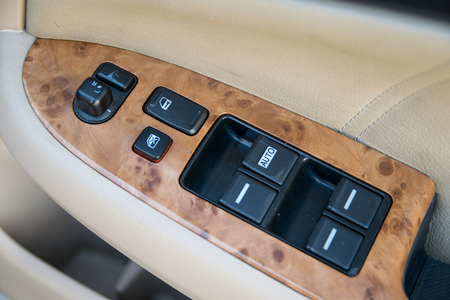Has your car window failed you? Are you no longer able to open and close your power windows at your leisure? Then it is time to get to the bottom of the issue. Many incidents can occur with your power windows, but there are solutions for every problem. Here are a few of the most common power window issues and fixes.
 Identifying that You May Have a Window Issue
Identifying that You May Have a Window Issue
If you are not super familiar with cars and their functions, you may not even realize that you have a problem with your power windows, or you might notice that there is an issue, but not be sure that it is connected to your windows. Well, this information is for you.
There are a few reoccurring problems that are directly tied to your power windows. One of the major issues you might face is that your window no longer moves up and down when you direct it to with the window switch.
Sometimes, even if the window moves, it can make an unusual sound that is not natural to its regular movement. You also may notice that you window drops to one side when operated.
If you struggle with any of these issues, it is a sign that you may need a fix to one of the components that drive your power windows. These symptoms can relate to any number of problems, including a blown fuse, faulty window switch, faulty window motor or a faulty window regulator.
Fixing Your Power Window Issues
To try and diagnose what your issue is, follow these clues. If your window is not operating but you can hear the sound of a motor working, it usually means that you have an issue with your window switch, motor or regulator. It is best to contact the team at AV Bumper to Bumper in this circumstance, as repairs can be tricky and sometimes dangerous.
If you have a basic knowledge of cars, there is a troubleshooting a method that you can try without the help of a mechanic, and that is checking the fuse. If you investigate and find that the fuse is broken, this can be easily replaced and fixes by novices.
Checking Fuses
Checking your fuse is a relatively easy endeavor. First, check your owner’s manual to find the location of your fuse box. After removing the cover, check underneath it, as most cars have a diagram that explains what fuses correspond to what car part.
There are two ways to check for a faulty fuse. If you have the equipment, you can use a voltmeter to test the voltage level. The level should be between 12-14 volts. If you do not get any reading at all, the odds are that your fuse is bad.
You can also sometimes check the status of your fuse simply by looking at it. After you extract the fuse, look it over and examine the metal strip in the middle. If that strip is broken, you officially have a broken fuse, but if it is intact, another issue may be the culprit.
Avoid Future Issues
Not everyone will experience issues with their power windows, and there are actually a few preemptive measures you can take to prevent this damage in the future.
First, avoid letting rain and precipitation into your vehicle and onto your window controls, as doing so can significantly increase your chances of damage. After all, water and electronics rarely mix well. Also, once the window is rolled up or down, release the button. Keeping the button pressed after the window has completed its operation is a recipe for disaster.
If you are having window issues that are beyond your knowledge, bring your vehicle to AV Bumper to Bumper. We have seen it all, and we can use our extensive experience to troubleshoot your issue and make any necessary repairs in no time. Give us a call at 661-949-1999 to schedule a service appointment.




